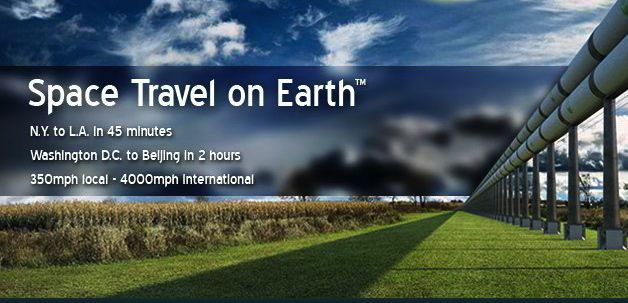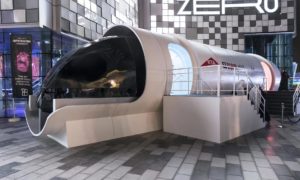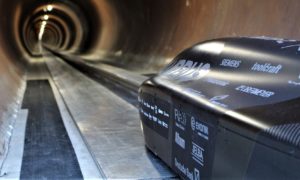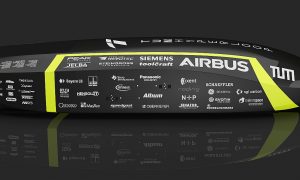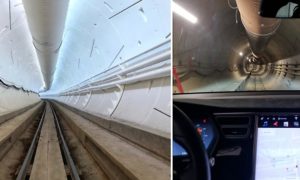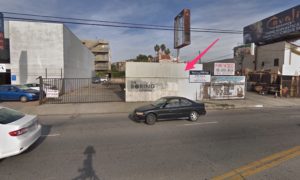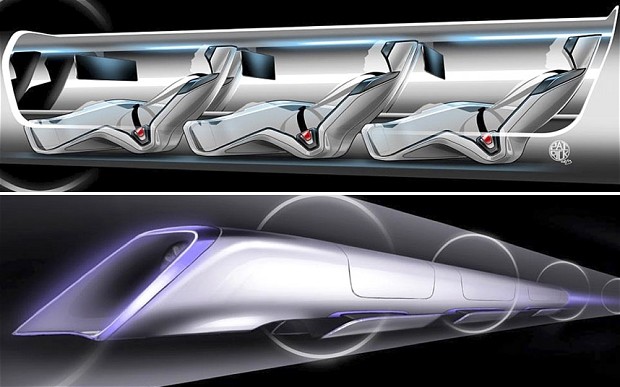

Investor's Corner
HyperLoop Test Track Coming To California
HyperLoop Transportation Technologies has purchased land in central California to build HyperLoop test track to see if the this nutty idea actually works.
HyperLoop Transportation Technologies has struck a deal to buy enough land near Interstate 5 in central California to build a 5 mile long HyperLoop test track, reports Navigant Research. It will cost about $100,000,000 and serve as a “proof of concept” facility for the HyperLoop idea proposed by Elon Musk in 2013. The money to pay for it is expected to come from an IPO later this year, with construction beginning in 2016.
If you’re not familiar with the HyperLoop, think of it as one of those pneumatic tubes that connect drivers and tellers at drive-thru banks, only hundreds of miles long and big enough to carry people. Musk thinks such a system could whisk passengers from LA to San Francisco in about 35 minutes at speeds up to 800 mph.
If that seems a little fantastic to you, remember this is the man who thought it was possible to build a rocket ship for a fraction of what it costs other companies — and then did it. Today, his SpaceX company has years of business worth billions of dollars booked, while those others are crying for customers. Saying “It can’t be done,” to Musk is like telling Congress to stop spending your money.
For all his genius, not even Elon Musk can overturn the laws of physics. All transportation devices have to deal with friction losses and wind resistance. As speeds increase, so does friction, but the real enemy of high speed travel is wind resistance. Aerodynamic loads increase with the square of speed. That’s why it takes 4 times as much power to punch a hole in the air at 100 mph than it does at 50 mph.
The HyperLoop doesn’t repeal the laws of physics; it finds new ways to minimize their effects. It’s one of those “Don’t raise the bridge, lower the river,” kind of things and it’s brilliant. Let’s start with wind resistance. The HyperLoop will consist of a steel tube hundreds of miles long that has a partial vacuum inside. Less air means less wind resistance. Less wind resistance means higher speeds with less power.
Part two of the plan eliminates all the wheels, axles and motors that cause friction in regular vehicles. Instead, the transportation modules inside the HyperLoop tube will “float” on a thin layer of air, slashing friction to nearly zero. Instead of motors, the train will be propelled by electrically powered linear accelerators installed along its entire length. Once again, the idea is brilliant. But will it work?
Musk says passengers in his HyperLoop will be whisked along in complete comfort. But skeptics point out that they will be sealed inside windowless pods during the journey. Those who suffer from claustrophobia shouldn’t buy a ticket. There will be no beverage service, no restrooms and no possibility of moving around during the journey. Furthermore, they will be bombarded by the sound of what little air is left inside the tube rushing by at near supersonic speeds.
While Musk assumes the ride will be serenely smooth, in reality the alignment of the tube will have to be virtually perfect over its entire length for that to happen. Hello? We are talking about California here, a state known for its frequent seismic activity. Then there are considerations like how to keep the HyperLink tube sealed against air leaks and safe from vandalism.
The test track is designed to answer all those questions and win over the doubters. If the idea is validated, Musk says a Hyperloop along the heavily traveled I 5 corridor could be built for about $8 billion. Contrast that with the $64 billion the Amtrak high speed rail line scheduled to begin construction soon is supposed to cost. When was the last time a government project came in on time and under budget? Of course, Musk’s numbers don’t include the costs of developing his idea and making it a reality.
Elon Musk’s greatest gift is spinning wondrous tales about what could be and convincing people to invest today in his promise of tomorrow. Then he uses the funds raised to make tomorrow happen. So far, more people have made money investing in Musk and his dreams than have lost it. When the HyperLoop Transportation Technologies IPO takes place, will you be on the phone to your broker, placing a “buy” order? Or do you think the HyperLoop is mostly hype and hyperbole?
The problem with predicting the future is the future is so stubbornly unpredictable.
Elon Musk
Tesla investors will be shocked by Jim Cramer’s latest assessment
Jim Cramer is now speaking positively about Tesla, especially in terms of its Robotaxi performance and its perception as a company.

Tesla investors will be shocked by analyst Jim Cramer’s latest assessment of the company.
When it comes to Tesla analysts, many of them are consistent. The bulls usually stay the bulls, and the bears usually stay the bears. The notable analysts on each side are Dan Ives and Adam Jonas for the bulls, and Gordon Johnson for the bears.
Jim Cramer is one analyst who does not necessarily fit this mold. Cramer, who hosts CNBC’s Mad Money, has switched his opinion on Tesla stock (NASDAQ: TSLA) many times.
He has been bullish, like he was when he said the stock was a “sleeping giant” two years ago, and he has been bearish, like he was when he said there was “nothing magnificent” about the company just a few months ago.
Now, he is back to being a bull.
Cramer’s comments were related to two key points: how NVIDIA CEO Jensen Huang describes Tesla after working closely with the Company through their transactions, and how it is not a car company, as well as the recent launch of the Robotaxi fleet.
Jensen Huang’s Tesla Narrative
Cramer says that the narrative on quarterly and annual deliveries is overblown, and those who continue to worry about Tesla’s performance on that metric are misled.
“It’s not a car company,” he said.
He went on to say that people like Huang speak highly of Tesla, and that should be enough to deter any true skepticism:
“I believe what Musk says cause Musk is working with Jensen and Jensen’s telling me what’s happening on the other side is pretty amazing.”
Tesla self-driving development gets huge compliment from NVIDIA CEO
Robotaxi Launch
Many media outlets are being extremely negative regarding the early rollout of Tesla’s Robotaxi platform in Austin, Texas.
There have been a handful of small issues, but nothing significant. Cramer says that humans make mistakes in vehicles too, yet, when Tesla’s test phase of the Robotaxi does it, it’s front page news and needs to be magnified.
He said:
“Look, I mean, drivers make mistakes all the time. Why should we hold Tesla to a standard where there can be no mistakes?”
It’s refreshing to hear Cramer speak logically about the Robotaxi fleet, as Tesla has taken every measure to ensure there are no mishaps. There are safety monitors in the passenger seat, and the area of travel is limited, confined to a small number of people.
Tesla is still improving and hopes to remove teleoperators and safety monitors slowly, as CEO Elon Musk said more freedom could be granted within one or two months.
Investor's Corner
Tesla gets $475 price target from Benchmark amid initial Robotaxi rollout
Tesla’s limited rollout of its Robotaxi service in Austin is already catching the eye of Wall Street.

Venture capital firm Benchmark recently reiterated its “Buy” rating and raised its price target on Tesla stock (NASDAQ: TSLA) from $350 to $475 per share, citing the company’s initial Robotaxi service deployment as a sign of future growth potential.
Benchmark analyst Mickey Legg praised the Robotaxi service pilot’s “controlled and safety-first approach,” adding that it could help Tesla earn the trust of regulators and the general public.
Confidence in camera-based autonomy
Legg reiterated Benchmark’s belief in Tesla’s vision-only approach to autonomous driving. “We are a believer in Tesla’s camera-focused approach that is not only cost effective but also scalable,” he noted.
The analyst contrasted Tesla’s simple setup with the more expensive hardware stacks used by competitors like Waymo, which use various sophisticated sensors that hike up costs, as noted in an Investing.com report. Compared to Tesla’s Model Y Robotaxis, Waymo’s self-driving cars are significantly more expensive.
He also pointed to upcoming Texas regulations set to take effect in September, suggesting they could help create a regulatory framework favorable to autonomous services in other cities.
“New regulations for autonomous vehicles are set to go into place on Sept. 1 in TX that we believe will further help win trust and pave the way for expansion to additional cities,” the analyst wrote.
Tesla as a robotics powerhouse
Beyond robotaxis, Legg sees Tesla evolving beyond its roots as an electric vehicle maker. He noted that Tesla’s humanoid robot, Optimus, could be a long-term growth driver alongside new vehicle programs and other future initiatives.
“In our view, the company is undergoing an evolution from a trailblazing vehicle OEM to a high-tech automation and robotics company with unmatched domestic manufacturing scale,” he wrote.
Benchmark noted that Tesla stock had rebounded over 50% from its April lows, driven in part by easing tariff concerns and growing momentum around autonomy. With its initial Robotaxi rollout now underway, the firm has returned to its previous $475 per share target and reaffirmed TSLA as a Benchmark Top Pick for 2025.
Elon Musk
Tesla blacklisted by Swedish pension fund AP7 as it sells entire stake
A Swedish pension fund is offloading its Tesla holdings for good.
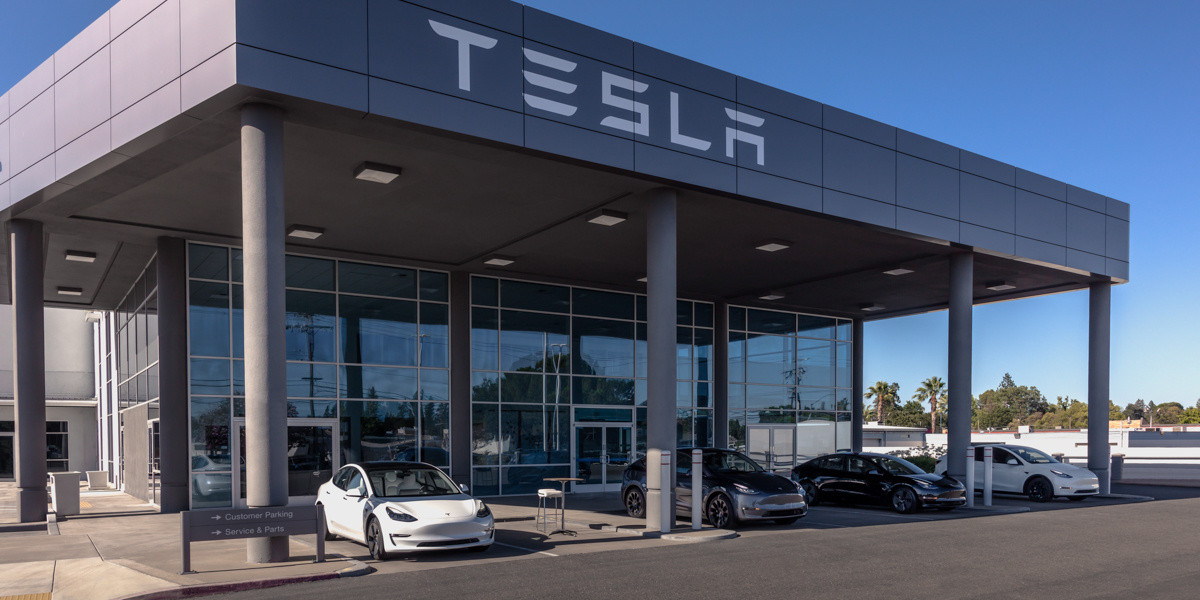
Tesla shares have been blacklisted by the Swedish pension fund AP7, who said earlier today that it has “verified violations of labor rights in the United States” by the automaker.
The fund ended up selling its entire stake, which was worth around $1.36 billion when it liquidated its holdings in late May. Reuters first reported on AP7’s move.
Other pension and retirement funds have relinquished some of their Tesla holdings due to CEO Elon Musk’s involvement in politics, among other reasons, and although the company’s stock has been a great contributor to growth for many funds over the past decade, these managers are not willing to see past the CEO’s right to free speech.
However, AP7 says the move is related not to Musk’s involvement in government nor his political stances. Instead, the fund said it verified several labor rights violations in the U.S.:
“AP7 has decided to blacklist Tesla due to verified violations of labor rights in the United States. Despite several years of dialogue with Tesla, including shareholder proposals in collaboration with other investors, the company has not taken sufficient measures to address the issues.”
Tesla made up about 1 percent of the AP7 Equity Fund, according to a spokesperson. This equated to roughly 13 billion crowns, but the fund’s total assets were about 1,181 billion crowns at the end of May when the Tesla stake was sold off.
Tesla has had its share of labor lawsuits over the past few years, just as any large company deals with at some point or another. There have been claims of restrictions against labor union supporters, including one that Tesla was favored by judges, as they did not want pro-union clothing in the factory. Tesla argued that loose-fitting clothing presented a safety hazard, and the courts agreed.
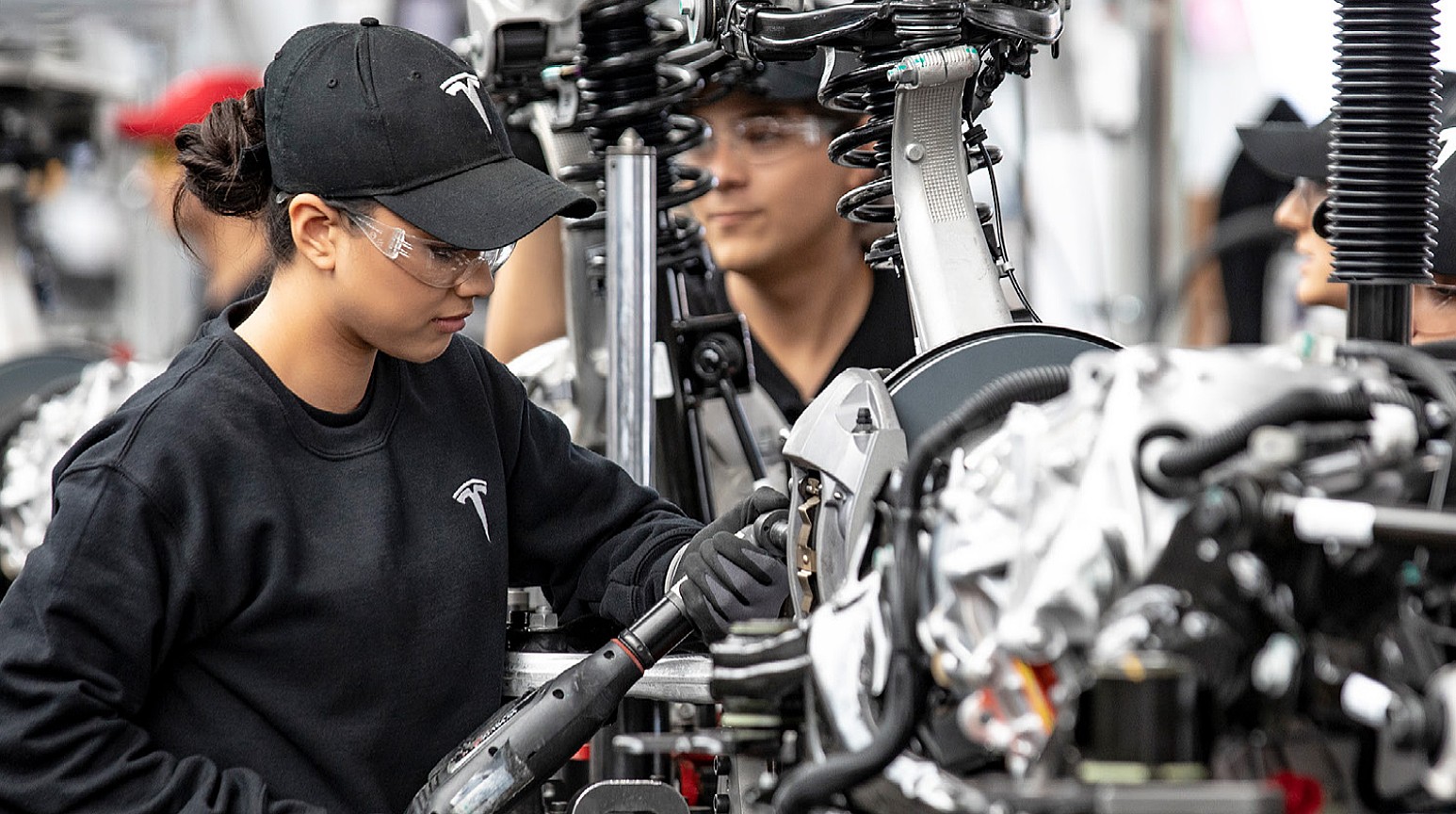
(Photo: Tesla)
There have also been claims of racism at the Fremont Factory by a former elevator contractor named Owen Diaz. He was awarded a substantial sum of $137m. However, U.S. District Judge William Orrick ruled the $137 million award was excessive, reducing it to $15 million. Diaz rejected this sum.
Another jury awarded Diaz $3.2 million. Diaz’s legal team said this payout was inadequate. He and Tesla ultimately settled for an undisclosed amount.
AP7 did not list any of the current labor violations that it cited as its reason for
-

 News5 days ago
News5 days agoTesla Robotaxi’s biggest challenge seems to be this one thing
-

 News2 weeks ago
News2 weeks agoTesla confirms massive hardware change for autonomy improvement
-

 Elon Musk2 weeks ago
Elon Musk2 weeks agoElon Musk slams Bloomberg’s shocking xAI cash burn claims
-

 News2 weeks ago
News2 weeks agoTesla China roars back with highest vehicle registrations this Q2 so far
-

 News2 weeks ago
News2 weeks agoTesla features used to flunk 16-year-old’s driver license test
-

 News2 weeks ago
News2 weeks agoTexas lawmakers urge Tesla to delay Austin robotaxi launch to September
-

 News2 weeks ago
News2 weeks agoTesla dominates Cars.com’s Made in America Index with clean sweep
-

 News2 weeks ago
News2 weeks agoTesla’s Grok integration will be more realistic with this cool feature

